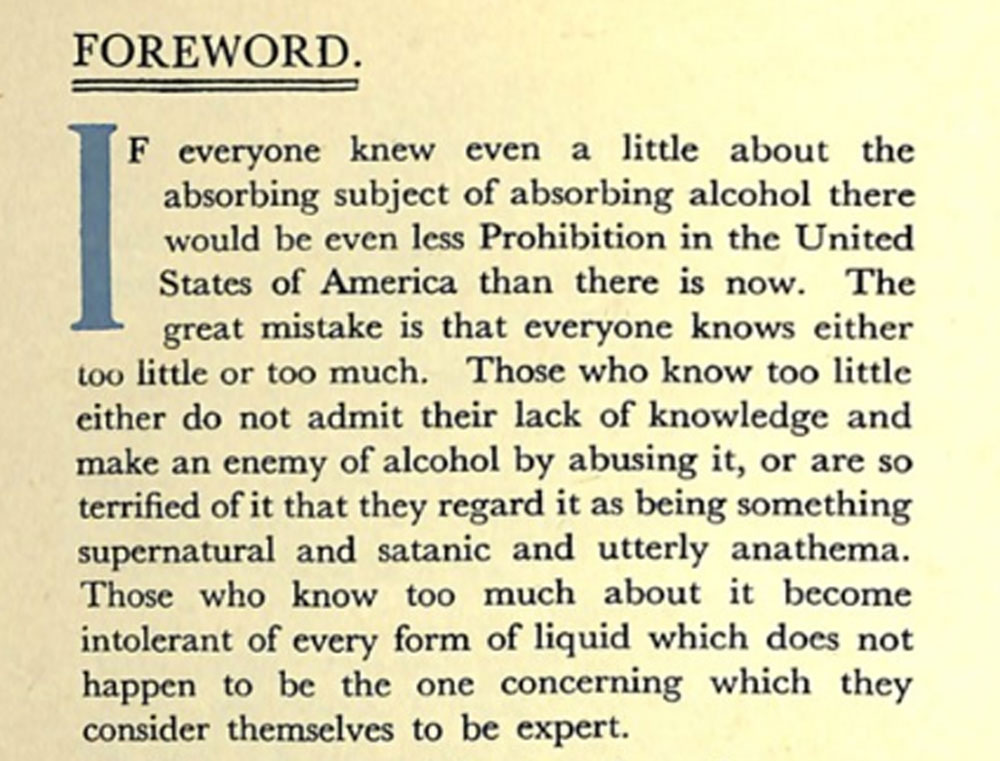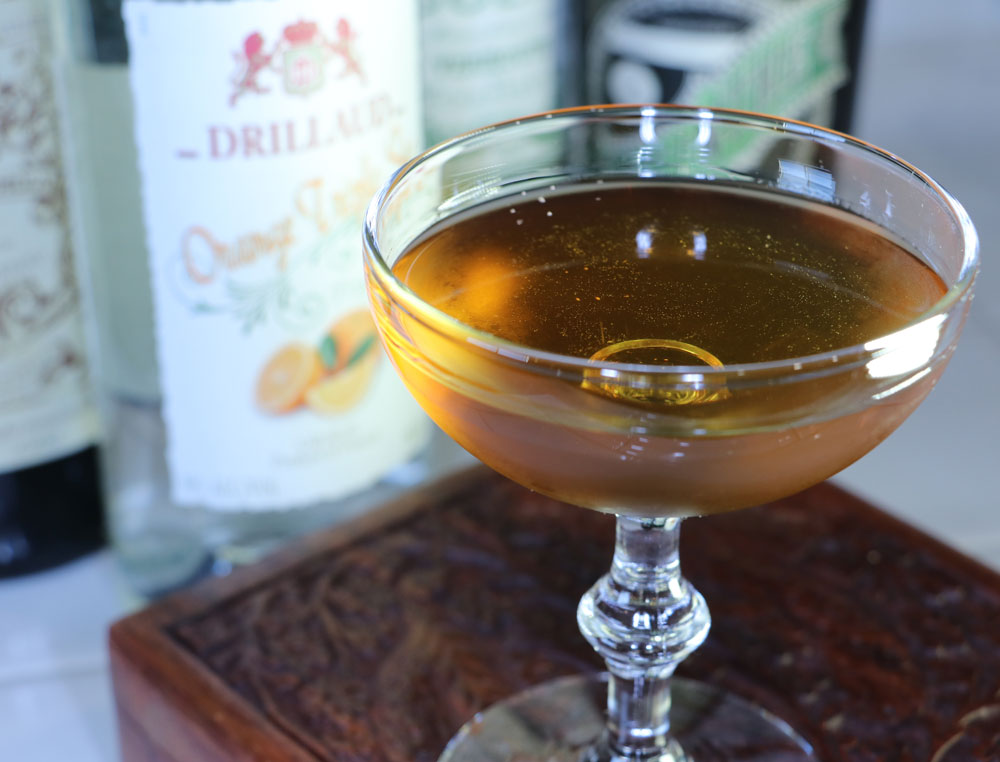By all accounts, Harry Craddock’s Savoy Cocktail book lays claim to the next recipe published in Mr. Boston’s. This isn’t the first cocktail to be identical to the Savoy and probably won’t be the last since they were produced within 5 years of one another.
The older of the two books, the Savoy is held in high esteem and dare I say favored over my 1935 Mr. Boston’s manual. The man who wrote the book, moved to London as Prohibition started in the United States and took the position as the head bartender at the Savoy Hotel.

Craddock is credited with crafting many famous cocktails while heading up the Savoy bar during the 1920’s and 30’s.
Rumor has it that Harry was also true to his era and did not believe women should work behind the bar. As a result, stories of the new head bartender firing female bartenders and publishing their work as his own are floating around the web. If true, that tidbit of knowledge made me less inclined to want to highlight this particular historical figure. Harry Craddock’s achievements get enough play without me spending too much time on him.
Still the fact remains that despite his less than honorable qualities, Harry created a very nice body of work in his Savoy Cocktail book. In particular, I enjoyed the forward of the book which expresses everything I aim to do with my Mr. Boston’s series.

My hope is to help those who know too little learn more about alcohol while inspiring those who know too much to continue learning about all types of liquor rather than focusing one type of spirit and proclaiming it to be the best.
Seems that part of the drinking scene has stayed the same over the last 87+ years.
The Bombay Cocktail recipe published in Mr. Boston’s 1935 book is identical to Savoy’s Bombay Cocktail NO.2 except for the Brandy. You guessed it, Mr. Boston’s calls for Apricot Nectar, surprise, surprise ?
After a series of unsatisfying Rum cocktails, I was excited to see Absinthe make a return to the menu. I wasn’t sure what to except from the mixture of ingredients though nor did I have any idea what Vermouth, Curacao, Absinthe and Brandy had to do with India. Another history lesson to the rescue!
Bombay was a British territory until 1947. Around 1930, the year the Savoy Cocktail book was published, there was political unrest in the region in protest of a Salt tax Britain had imposed. If protests make the news as all encompassing as it does today, I can only imagine how this historical event could have inspired the Bombay Cocktail. I don’t think it is too reaching after finding a possible link between the Bolo Cocktail and treason yesterday. Heck, even the French army inspired the Blue Devil Cocktail a while back.
What I don’t get is the ingredients. Could it be a nod to the tea trade India is known for?
Absinthe and Vermouth have one common element… both involve a ton of herbs and spices to produce.
As a quick example, our Absinthe infusion spices employ 11 different dry herbs that are harvested from around the globe. Though many of the herbs we use are being grown in the United States these days, there are several ingredients that are still sourced from countries located around spice trading routes from long ago. Egypt, China and Uzbekistan harvest the Star Pod, Anise Seed, Licorice Root and Coriander needed for our recipe.
Likewise, both the sweet and dry Vermouth versions rely heavily on a wide number of natural ingredients that give them their distinctive flavor profile. Seems to me that crafting an Indian inspired cocktail using strong herbal liquors makes a lot of sense.
We mixed up the Mr. Boston’s Apricot Brandy first. Oh my, that is a good drink! As Ryan noticed, the Bombay is very complex but perfectly balanced. The herbs in the Dolin’s Dry / Antica Formula Red Vermouth’s and our homemade Absinthe played perfectly together while the fruit notes lingered at the back. Perfection!
I wanted to see how Harry’s plan Brandy recipe worked in comparison.
We had a bottle of Remy that we purchased on suggestion of a Total Wine manager. Honestly, it wasn’t my favorite for B & B’s but it isn’t bad by any means. I mixed up the recipe as instructed and while it was very good, Mr. Boston’s Apricot Brandy suggestion took the drink to a whole new level.
The Remy Brandy highlighted the bitter Wormwood notes in the Antica Formula while the Apricot brought out the Orange of the Curacao. Personally I preferred the later but both were heads and tails better than the Bolo Cocktail. All and all I’d say it was a successful drinking night.


